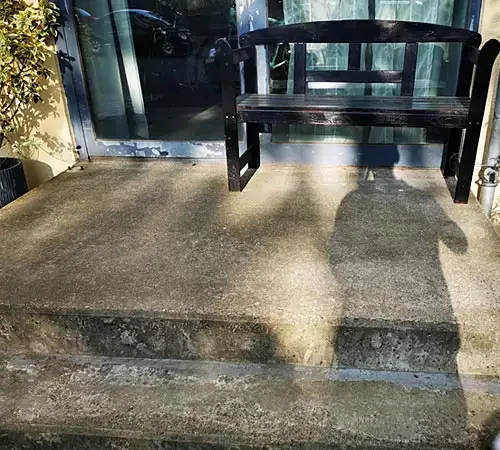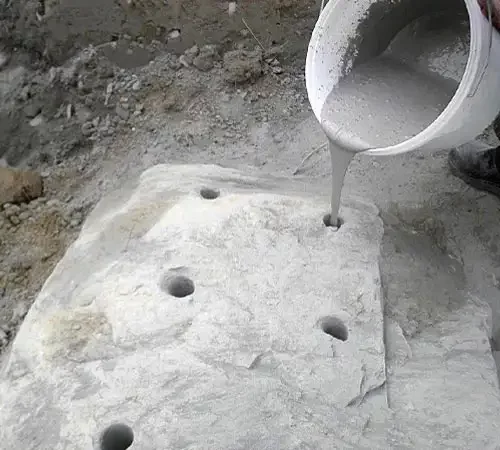6 FREQUENTLY ASKED QUESTIONS ABOUT CONCRETE REMOVAL!
Concrete is a very durable material often used for building foundations, walls, and floors. When you need to remove concrete, there are several methods to consider. One option is to break the concrete with a hammer or a rotary hammer drill and then collect the pieces with a shovel or broom.
Another method is to use a concrete saw or a concrete grinder to cut the concrete into smaller pieces for easier removal. Additionally, you can use chemical agents to dissolve or weaken the concrete. However, it’s important to note that these chemicals are often toxic and dangerous, so precautions should be taken, and the manufacturer’s instructions should be followed carefully. In any case, you should research the proper technique and necessary safety equipment to avoid injuries before removing concrete.
Suitable Tools and Safety Guidelines
QUESTION 1: What tools are typically needed to remove concrete blocks?
- Hammer and Chisel: A hammer and chisel are ideal for removing small to medium-sized concrete blocks. The chisel is struck against the concrete block to break it, and then the individual pieces can be removed.
- Drill: If the concrete block is too hard or large to break with a chisel, a drill can be used to create holes in the concrete. These holes make it easier to break the concrete block.
- Concrete Saw: A concrete saw is an effective way to remove large concrete blocks. The saw can be used to cut the concrete into smaller pieces, which can then be more easily removed.
- Hydraulic Hammer: A hydraulic hammer is a powerful tool, ideal for removing large concrete blocks. The hydraulic hammer strikes the concrete block, breaking it into smaller pieces that can then be removed.
It is important to note that removing concrete blocks can be dangerous, and safety equipment such as gloves, safety glasses, and hearing protection should be worn. If you are unsure how to remove concrete blocks, it is best to consult a professional to avoid injuries or damage.

In the first image, you can see the old concrete foundation that occupies valuable space in a customer's basement. This obstacle needed to be removed to make room for new projects and possibilities. Initially, our customer was concerned about whether they could handle the task on their own.

After addressing all of our customer's concerns, they decided to remove the foundation using BETONAMIT®. Our detailed diagram showed exactly how to place the drill holes to achieve the best possible results. Once they took the step, they joyfully sent us the photos you see here. The foundation was effortlessly removed with BETONAMIT®, and our customer was thrilled with the smooth process.

The removal of the concrete block was efficient and left no residue, allowing the customer to now design the space according to their preferences.
Contact us today and let us impress you with our products and expertise.
Costs and Key Considerations
QUESTION 2: What is the typical cost to remove a concrete foundation?
The cost of removing a concrete foundation depends on several factors, including the size of the foundation, the accessibility of the site, and the type of tools or machinery used. Here are some key factors that can influence the cost:
- Size of the foundation: The size of the foundation is an important factor that determines the cost. The larger the foundation, the more time, labor, and materials are required for removal, which can lead to higher costs.
- Accessibility of the site: The accessibility of the site can also influence the cost. If the site is difficult to access, it may be more challenging and time-consuming to remove the foundation, leading to higher costs.
- Type of tools or machinery used: The type of tools or machinery used for the removal can affect the cost. Simple hand tools like a hammer and chisel may cost less than a concrete saw or hydraulic hammer.
Typically, the cost of removing a concrete foundation ranges from 50 to 150 euros per square meter. However, if the foundation is particularly large or requires special tools or machinery, the costs may be higher.
It is important to note that removing a concrete foundation can be a complex and dangerous task that should be carried out by an experienced professional. A professional demolition company will be able to remove the foundation safely and efficiently while adhering to all safety regulations. Before proceeding with the removal, be sure to get a quote from a professional to ensure you have a clear understanding of the costs involved. We offer a much more affordable alternative. Call us for advice!

The photo shows the old patio, which needs to be removed efficiently and quickly.

Holes are drilled into the concrete to fill with BETONAMIT®. These precise drillings are crucial for achieving an optimal result and removing the patio effortlessly.

The result speaks for itself! The patio was removed quickly and easily with BETONAMIT®.
A look at the time required
QUESTION 3: How long does it take to remove screed?
Removing screed can vary in time depending on the size and complexity of the project, as well as the type of screed and the tools and machinery used. Here are some factors that can influence the duration:
- Size of the area: The larger the area, the longer it generally takes to remove the screed.
- Type of screed: The type of screed can also affect the duration. A thin cement screed can be removed more quickly than a thick poured asphalt screed.
- Tools and machinery used: The tools and machinery used can also influence the time required. A hammer and chisel may take longer compared to a concrete saw or hydraulic hammer.
Typically, removing screed in an average residential area takes between 1 and 3 days. However, for larger or more complex projects, it can take several days or even weeks.
It is important to note that removing screed can be a challenging and hazardous task that should be carried out by experienced professionals. Before starting the project, be sure to get a quote from a professional to ensure you have an accurate understanding of the duration and costs involved. Additionally, make sure that all necessary safety measures are followed to avoid injuries or damage. We are happy to provide advice if you have questions about this topic.
Costs and important considerations
QUESTION 4: How can you remove concrete and concrete debris?
If you want to get rid of concrete or concrete debris, there are several ways to dispose of these materials. Here are some options:
- Recycling center: Many recycling centers accept concrete and brick debris, which can then be recycled. However, make sure the recycling center accepts this type of waste before bringing your concrete there.
- Landfill: In some cases, you can dispose of concrete and brick debris at a landfill. However, you should check the regulations and fees in advance.
- Specialized demolition or disposal companies: There are specialized demolition or disposal companies that can handle concrete and brick debris. These companies can assist with the collection and disposal of large amounts of concrete materials.
- Reuse: In some cases, concrete and brick debris can be reused, for example, as fill material or for constructing garden walls or other landscaping projects.
It is important to note that disposing of concrete and concrete debris is an environmentally responsible decision. However, if you are unsure how to dispose of these materials, you should consult an experienced professional to ensure you make the right choice.



Qualified companies for concrete block and foundation removal
QUESTION 5: Which companies remove large concrete blocks or foundations?
If you need to remove large concrete blocks or foundations, it's important to find a qualified company that has the necessary tools and experience to complete the project safely and efficiently. Here are some options to consider:
- Demolition companies: Demolition companies specialize in removing large concrete structures and have the specialized tools and machinery to carry out the project safely and efficiently.
- Concrete drilling and cutting companies: Concrete drilling and cutting companies have specialized drilling and cutting tools that can be used to remove concrete structures. They may also have the necessary equipment and experience to handle large concrete blocks or foundations.
- Construction companies: Some construction companies have experience in removing concrete structures and can assist with the removal of large concrete blocks or foundations.
It is important to thoroughly research companies before choosing one to ensure they have the necessary qualifications and experience to complete the project safely and efficiently. Ask for references and compare quotes to ensure you find the best company for your needs.



What you should consider
QUESTION 6: What should I consider when removing concrete in the garden?
Removing concrete in the garden can be a challenging task, but it is manageable if you use the right tools and techniques. Here are some things to consider when removing concrete from your garden:
- Wear protective clothing: When removing concrete, dust and debris can be released that may irritate your eyes and skin. Therefore, wear safety glasses, gloves, a dust mask, and appropriate footwear.
- Use the right tools: Use a combination of hammer, chisel, shovel, and possibly a concrete saw to remove the concrete. Make sure to use the correct tools to carry out the project efficiently.
- Protect the environment: If you are working near plants, walls, or other objects, protect them from damage. Use covers to shield the area and work slowly and carefully.
- Dispose of concrete waste: Concrete waste should be disposed of properly. Consider whether there is a recycling facility or landfill near you that accepts concrete waste.
- Seek professional help: If you need to remove large concrete structures in the garden or if you lack the necessary tools or experience, consider seeking help from professional demolition or landscaping companies.
It is important to be cautious and take your time to ensure that removing concrete in the garden is done safely and efficiently.
For further questions or to get support with your project, feel free to contact us. Our team is always available to advise and assist you. Call us at +49 9262 993 93 12 or email us at info@betonamit.de. We look forward to hearing from you and helping you successfully complete your project!

 German
German French
French